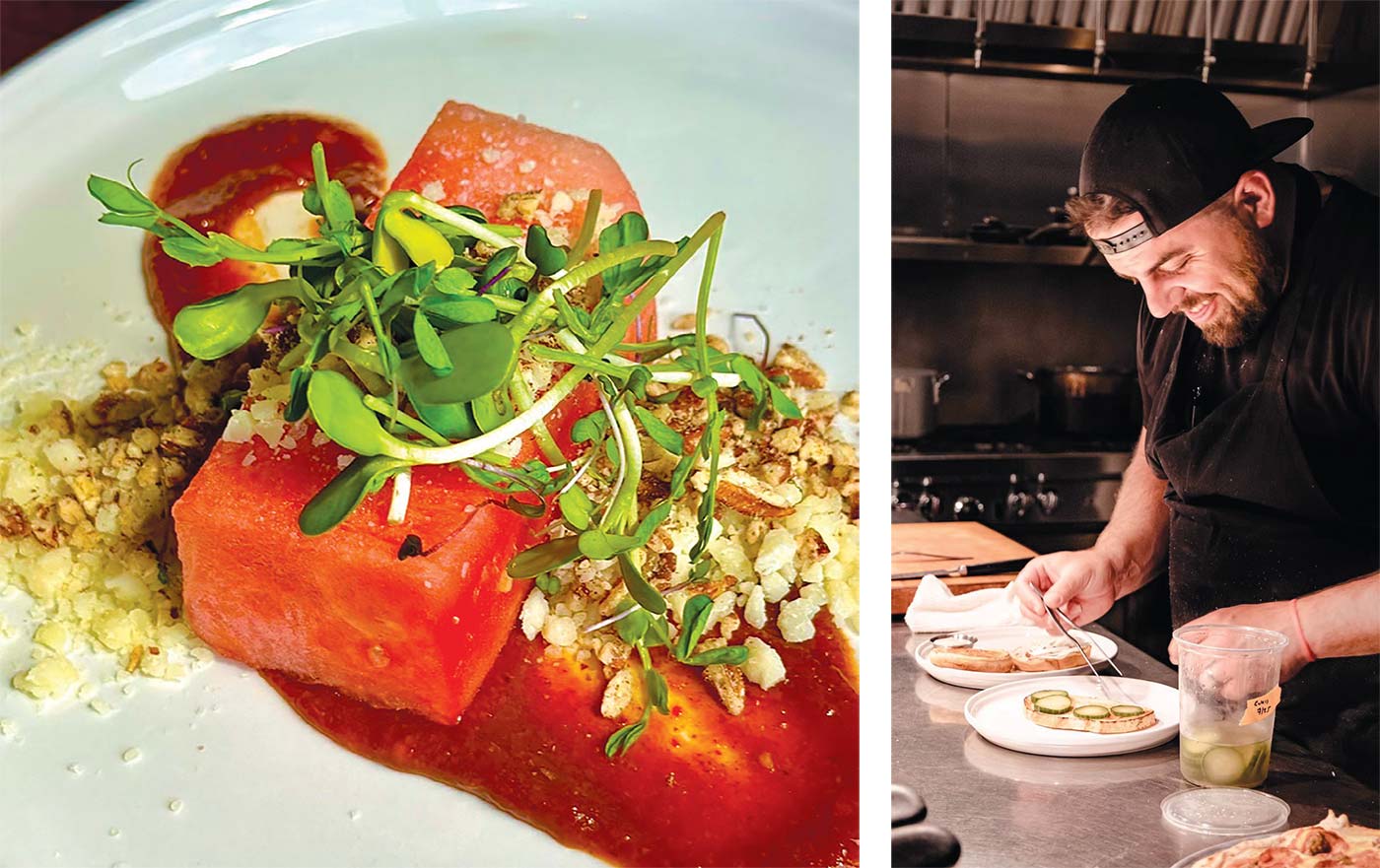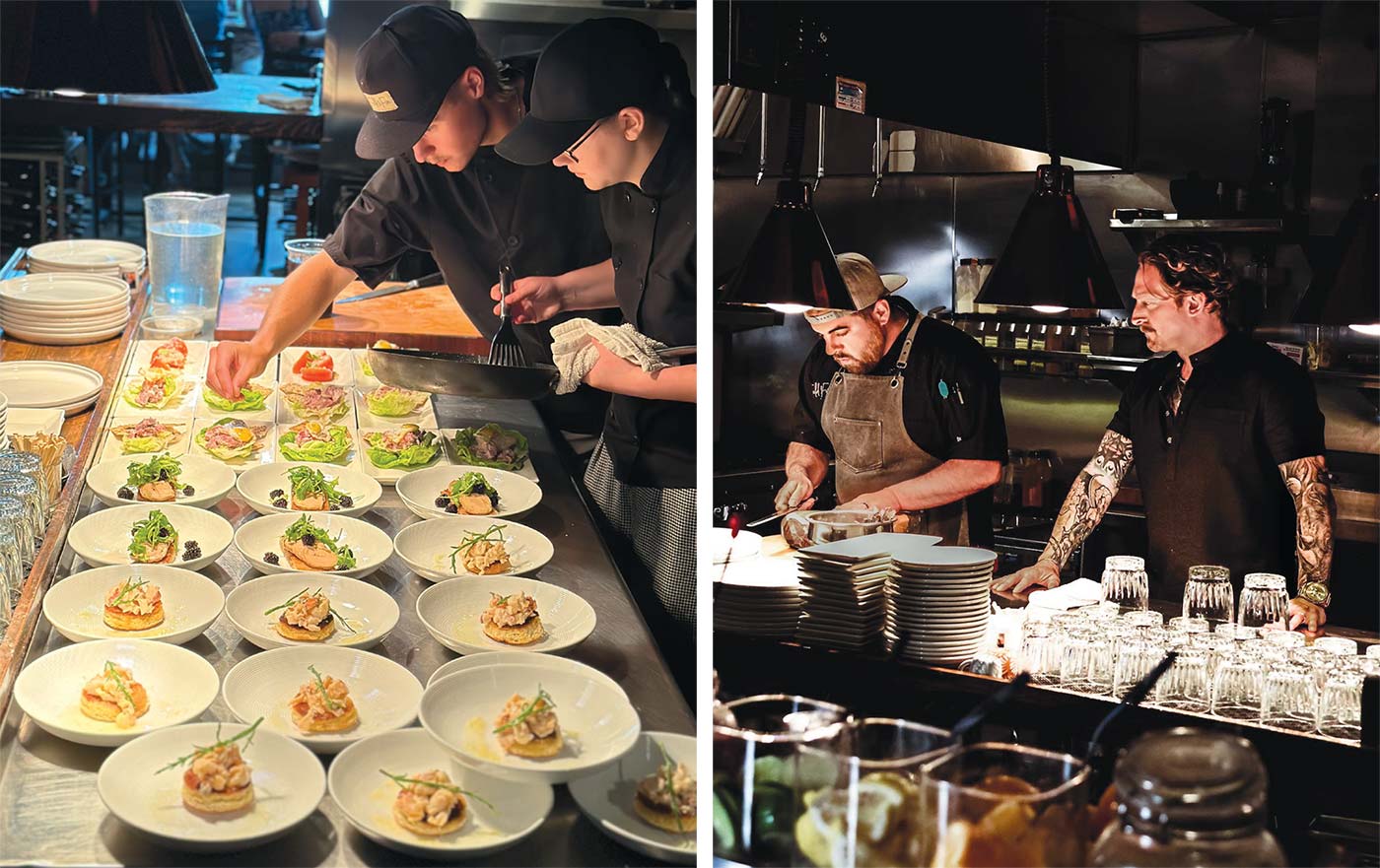Savoring Flavor Possibilities

When asked if he had favorite ingredients he liked to work with, Chef Ryan Sherman of Field & Fire began talking more about his relationships with vendors and people, not ingredients. He trusts his vendors and what they will bring him; he values the chance to create new flavors every twelve wee ks with the changing seasons. “We have a 90 day growing season here. That’s it. I create menus based on what my vendors bring me. I have ideas for dishes in my mind, but for me creating a plate is really like completing a puzzle—but a constantly moving puzzle because the ingredients I am provided with change. I might think I have all the pieces, but then something needs to get moved around because I am given a few different pieces to work with.”
Constantly changing puzzle pieces would make many of us sigh and potentially shrug in defeat. However, fluctuating ingredients seems to be something Ryan welcomes. While Ryan knows he can always get wagyu beef from Drath Family Farms and cheese from Belgioioso Cheese Inc, the produce and greens Purslane Farm and the Seed Guild bring him shifts. When asked how he defines “good food,” he immediately states that creating good food is creating possibilities of new flavor. A Wisconsin chef, who wants to use as many local products as possible, must continually interweave various spices and seasonal vegetables and microgreens in order to achieve that new flavor he seeks.
When discussing new flavors and new foods, co-owner Jordan Hereford’s stresses when creating food, the chef is creating for an audience. Jordan quickly points out Greenville has grown and continues to grow. He worked with the village five years ago to determine its potential growth and demographics. “Most people in Greenville are not from here. They work for Plexus or Gulfstream and are familiar with more urban areas that offer a variety of food; they don’t want to live in those areas, but they still want that type of food and that type of atmosphere," Jordan States. Ryan’s desires to continually do something new with the ingredients he is given appeals to this audience. Nodding in my direction, Jordan explains, “We grew up going to supper clubs, and we might enjoy that because that is part of our past... those who have moved here are looking for a different kind of experience.”
Through Ryan’s flavor connections, he hopes to connect people with positive memories. “Good food brings about a memory, hopefully a good memory. Food is linked to other experiences. We all have ‘food memories.’ One of my food memories is applewood. My grandpa smoked our turkey in applewood. When I smell that or taste something related to that flavor, I think of Thanksgiving in La Crosse with my grandparents. When ingredients work together to bring back a positive memory for someone, they aren’t just experiencing good food, but are, on some level, re-experiencing a previous positive experience.”
“GOOD FOOD BRINGS ABOUT A MEMORY, HOPEFULLY A GOOD MEMORY. FOOD IS LINKED TO OTHER EXPERIENCES ... WHEN INGREDIENTS WORK TOGETHER TO BRING BACK A POSITIVE MEMORY FOR SOMEONE, THEY AREN’T JUST EXPERIENCING GOOD FOOD, BUT ARE, ON SOME LEVEL, RE-EXPERIENCING A PREVIOUS POSITIVE EXPERIENCE.”

Jordan and Ryan’s vision for their business revolves around this idea of experiences bringing connectivity. They wanted an open kitchen in their restaurant and work to make this happen in a small space. Guests watch Ryan create. Jordan, who designed the space, tells me, “Other restaurants haven’t crushed this yet. We really wanted to do this. We wanted to interact with guests as we cook and for them and to see us interact with one another. We want to be with our guests.” Maybe making it look easy, Jordan points out “it was a learning curve. We had to figure out how to control the smells and the chaos of the kitchen. It has led us and our staff to learn and grow as they have to remain calm in all situations.”
The open kitchen captivates me as soon as I walked in. Field and Fire is warm and inviting like its name suggests. Warm wood colors provide a sense of serenity while tasteful, clean mirrors catch the sunlight coming through the front windows. Some bench seating allows guests to lean against soft, lavender cushions as they interact and enjoy. While Ryan expressed his desire to have guests re-experience warm memories through flavor, Jordan’s interior design indicates his desire for guests to create new, warm memories as they sit. And the open concept kitchen further enhances this sense of home, as those eating and those creating share the experience. Ryan pieces together local products while Jordan melds together pieces of the restaurant scene that are usually kept separate and secret, but are so much better together; when chefs and guests interact, more ‘food memories’ are formed, they say.
Wanting to connect with guests as they create for them displays this pair’s commitment to its community and its people. Ryan and Jordan share their vision for people as much as they talk about food. Ryan has formed a relationship with a local farmer who composts the minimal waste created in his kitchen and shared anecdotes of his conversations with vendors. Jordan openly discusses his gratitude toward the community of Greenville during COVID. They feel warmth and pride discussing their employees, especially with regard to working with adolescents and being part of their growth experience. In fact, a golf outing they planned allowed them to provide potential students' tuition to Fox Valley Technical College’s Culinary Arts program.
Talent behind Field & Fire involves ingenuity when connecting local ingredients, but Ryan Sherman and Jordan Hereford do more than that. They are connecting with people, becoming an integral piece of the Northeast Wisconsin food scene.



